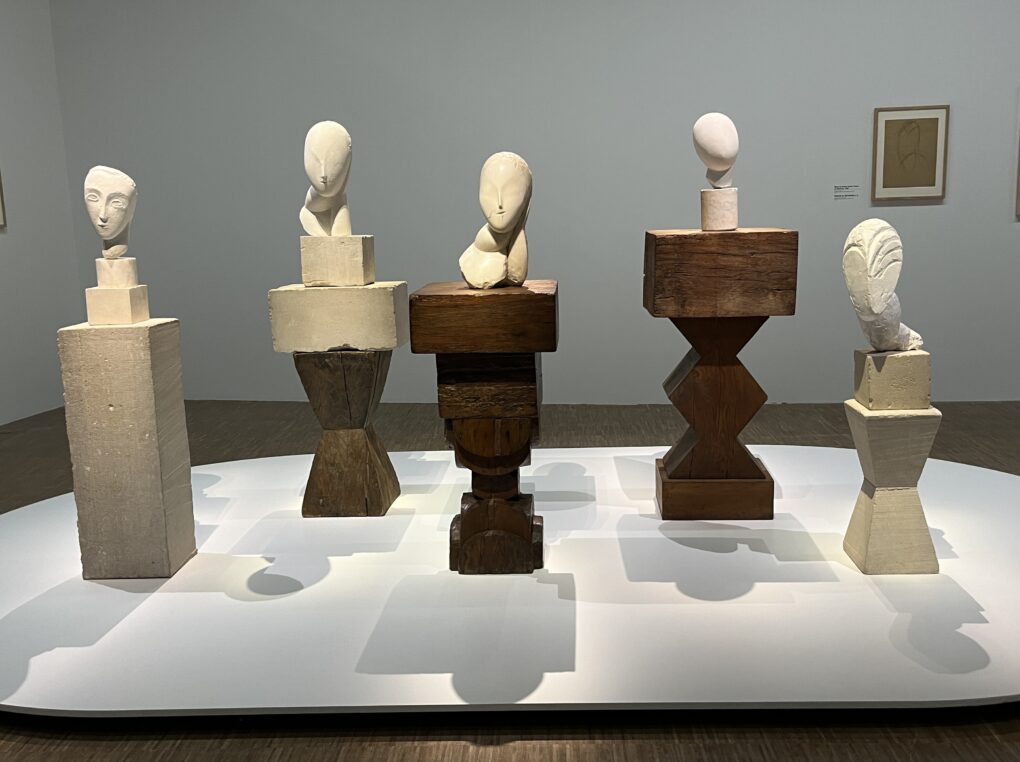
“La Baronne”, cir 1920, Centre Pompidou, “Head of a woman”, before 1922, Centre Pompidou, “A Muse”, 1912, Solomon R.Guggenheim Museum, New York, “A Muse” after 1917, Centre Pompidou, “Head of a woman”, circa 1908, Centre Pompidou
What an incredible surprise to enter the white and black world of Constantin Brâncusi (1876-1957) at Centre Pompidou and to (re)discover the talent of this Romanian sculptor, who was the first to carve marble and stone before creating plaster moulds, and concentrated on simple shapes. His studio of Impasse Ronsin, near Hopital Necker in Montparnasse, was a place of fascination for his contemporaries and he bequeathed it to the French government. It was recreated next to the Pompidou Center in 1997 and designed by Renzo Piano. The series of abstract birds, children’s heads, muses, and erotic “Princesses” were scenographed with great talent by Pascal Rodriguez and Bertrand Stevenel.
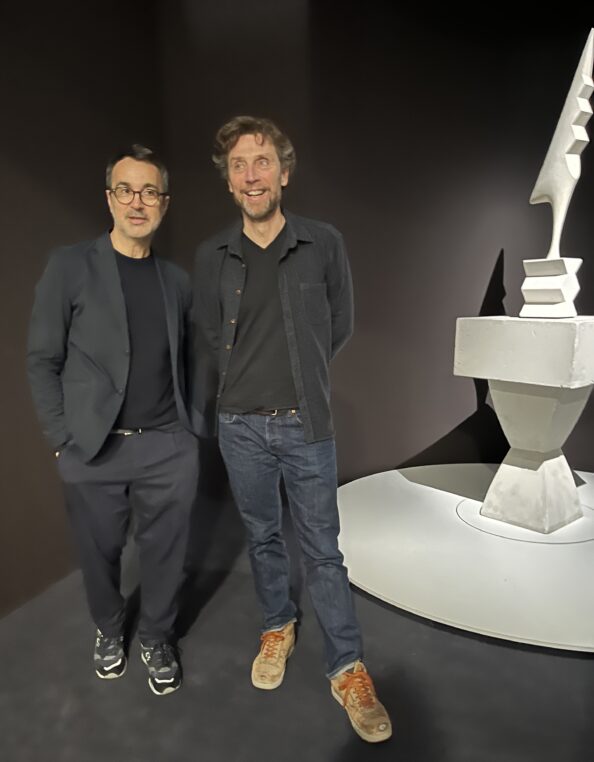
Pascal Rodriguez, the scenographer and Bertrand Stevenel, Register of spaces, created a whole new world for Brancusi
“The first time I went to see the sculptor Brancusi in his studio, I was more impressed than in any cathedral. I was overwhelmed with its whiteness and lightness… Coming into Brancusi’s studio was like entering another world”, this is how Man Ray described his experience with the sculptor in 1963. And after the first room, where there are confrontations of Rodin’s “Le Sommeil” (Sleep) and his own (he worked with Rodin when he first arrived in Paris), of a Cerro de los Santos head from the III rd century before Christ and his “Danaïde”, of a Head of Keros from 2600 bc and his torso of a young girl, we are suddenly confronted with a wide range of children, ink drawing, photographs of statues, small bronzes and marbles of sleeping children between 1906 ad 1921.
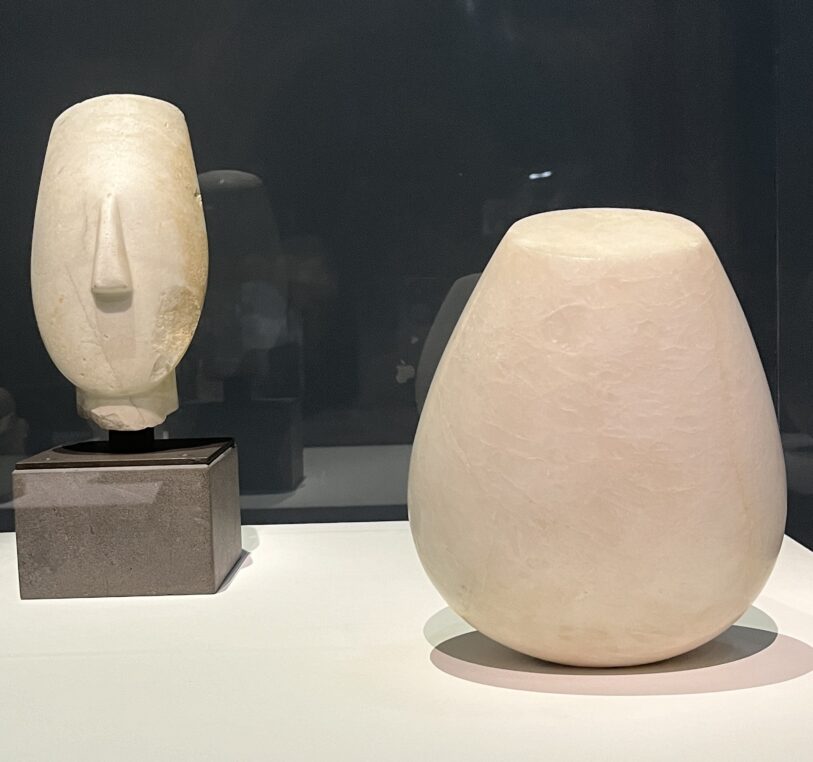
Anonymous, “Head of Keros”, 2600-2400 bc, Musée du Louvre and “Torso of a young girl” III, 1925, Centre Pompidou
The studio itself is set in a dark space where the rough wooden furniture which he sculpted, armchair, stool for the telephone, or stools as plinths for the statues. A large bronze of “La Prière” made for a funerary monument in 1907 came from Bucarest and is illustrated by a photograph of the same “Prayer” in plaster which hangs on a curved black wall with his portraits by Modigliani and Kokoschka, photos of his exhibition in New York in 1914, and many more photos by Steichen, Man Ray, and films by him or by collectors.
An extraordinary room follows with the series of erotic “Princesse X” in bronze and plaster and five heads of women and muses, five more heads of Eileen Lane, Nancy Cunard, The White Nigger I, the Blond Nigger II, bronze, The Blond Nigger II, plaster. The staging of these ten statues on their stone and wood sculpted plinths is spectacular. There is also a “Portrait of Mme Eugene Meyer Jr” his American patron and friend, whom he also films dancing in his studio. It is made of walnut wood while Nancy Cunard’s is made of plaster. The importance of music in his life is illustrated by a wall with his records of Romanian music.
The next room is the large space with windows opening on the whole of Paris. This is where the “Birds in Space” are all standing with the bronze version of 1941 set against a very dramatic red wall. He spent three decades working on his birds, creating 30 different versions in marble, bronze and plaster. They became more and more simplified over the years, shining down and stretching to breaking point for this last series. The exhibition ends with the film of the installation of his amazing “Endless Column” in Edward Steichen’s garden in Voulangis. All along, we realize that he endlessly documented his work with photographs and films and devoted a large part of his art to animals.
Constântin Brancusi walked to Paris from Bucharest in 1904. He had a retrospective of his work at the Guggenheim Museum in 1955 and bequeathed his entire studio to France (now at the Pompidou Center), which had made him a citizen in 1952 and he rests at Cimetière Montparnasse.
This exceptional show makes him alive with such refinement and staging that I can only recommend that you rush to see it. Until July 1 at Pompidou Center.
Share this Post
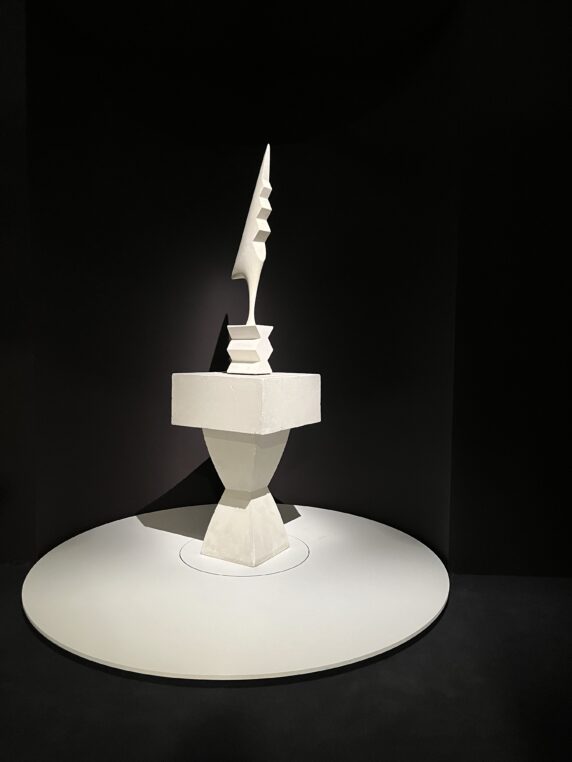
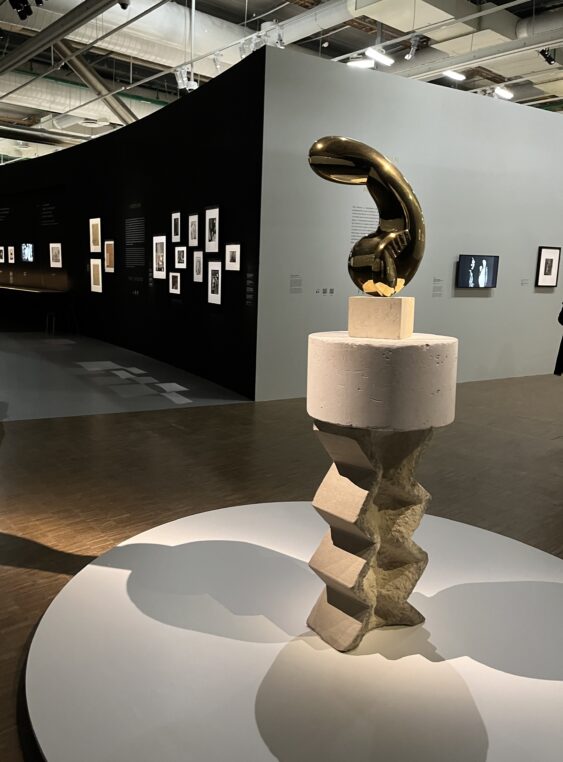
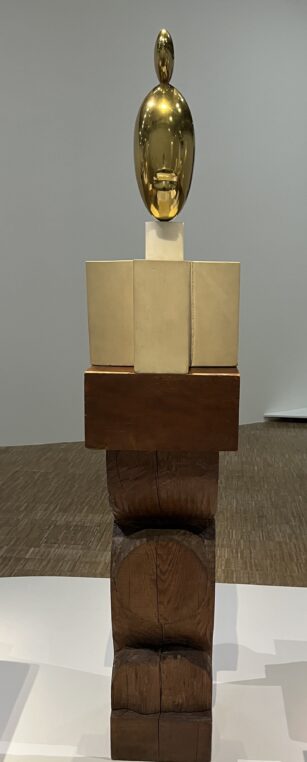

10 Comments on “Brancusi is overwhelmingly beautiful at Centre Pompidou”
C’est en effet l’une des plus belles, des plus fortes et émouvantes expositions que j’ai vues au Centre Pompidou depuis belle lurette. Et tu as bien raison de mettre le scénographe en avant car il a fait un travail remarquable.
Fantastic Brancusi! Thank you for the report.
A MUST is the new film by Olivier and Victoire Mille on Arte: “Brancusi – Sculpteur de la modernité”!
Konstantin
A spectacular exhibit. The displays are so well-thought out and choreographed like dancers in a dance. You sail through
Inspired tour! Thank you for sharing. Makes me want to learn more about the artist.
Une exposition magnifique, si bien présentée, une œuvre impressionnante et touchante.
Merci Laure pour votre article,
une belle raison de me rendre à Paris pour voir cette exposition.
Anne
Wonderful synopsis I wish I was in Paris to see the exhibit. Thank you!!!
Wonderful synopsis I wish I was in Paris to see the exhibit. Thank you!!!
An absolutely amazing exhibit of Brancusi’s life and work. We were fortunate enough to see it in Paris just a couple of weeks ago. It was a Tuesday and the exhibit was very crowded with visitors admiring his sculptures.
Thank you so much Laure for the article. It inspired us to travel to Paris and see it.
An absolutely amazing exhibit of Brancusi’s life and work. We were fortunate enough to see it in Paris just a couple of weeks ago. It was a Tuesday and the exhibit was very crowded with visitors admiring his sculptures.
Thank you so much Laure for the article. It inspired us to travel to Paris and see it.